Hi,
i have Smart Solar 75/15, which appears to be throttling or reducing the charge during the bulk phase.
I have 2 solar panels, a 130w panel (open circuit voltage 18.2v, and short circuit current of 7.2A) and a 100W panel (open circuit voltage 18.6V, and short circuit current of 4.9A). These panels are connected in parallel. The solar controller is connected to two brand new AGM batteries 92Ah and 120Ah connected in parallel. There are no loads on the batteries.
The highest output shown on my 75/15 is just 112W. The screen shot below shows just 66W with the battery at 14.43 v. This was in the middle of a sunny clear day in Australia, and just before I tested the panels with the multimeter. The Adsorption voltage is set to 14.8v. My understanding is the 75/15 should put in as much current as possible during the bulk phase. With my panels, I should see a Max of about 220W.
With no real load on them at the moment my batteries start at 12.7v in the morning. With the throttling behaviour of the solar controller, they seem to take ages to get up to the bulk/adsorption trigger voltage of 14.8 (which temp compensates to 14.61v). In the snip below it took 3 hours 42minutes to reach this voltage, this was in full sun from 10am!
Could someone please explain what is happening. I’m disappointed in this solar controller, as it seems to not be using the full potential of the panels, and so take ages to raise the battery voltage.
Thanks,
Alan
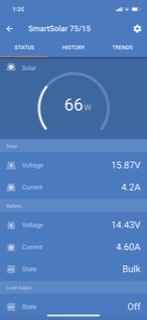

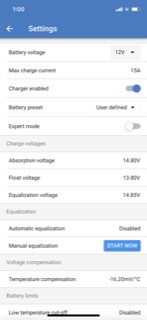


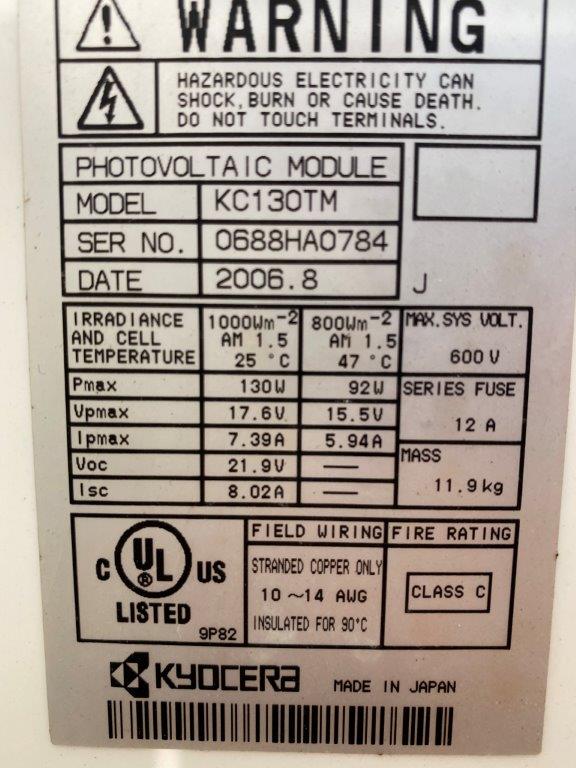
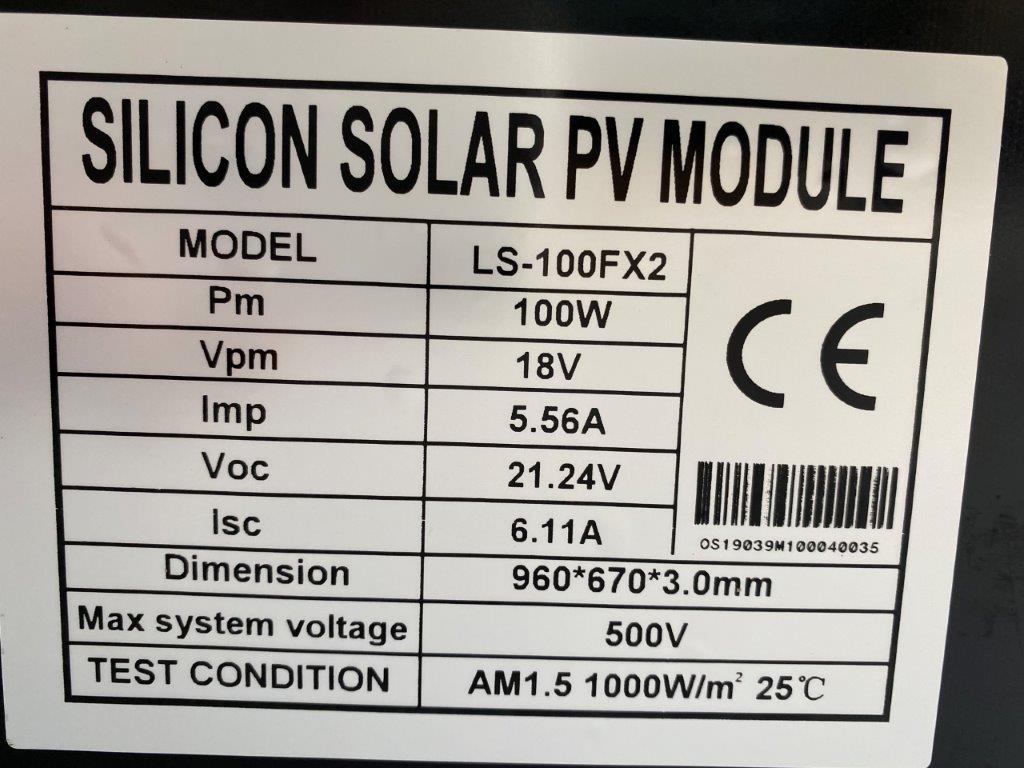 I also tried connecting the panels in series. First the 130 W by itself:
I also tried connecting the panels in series. First the 130 W by itself: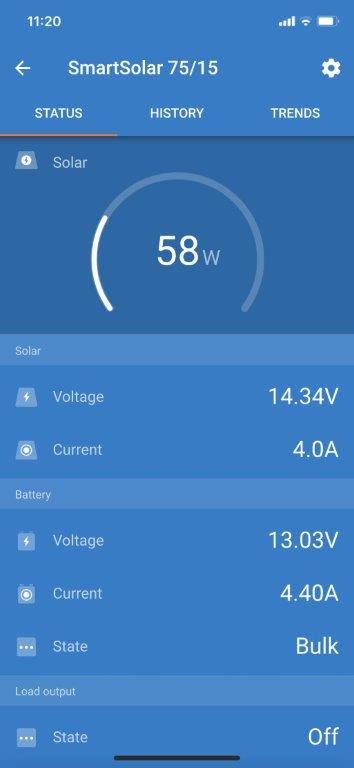 Then in the two panels in parallel
Then in the two panels in parallel 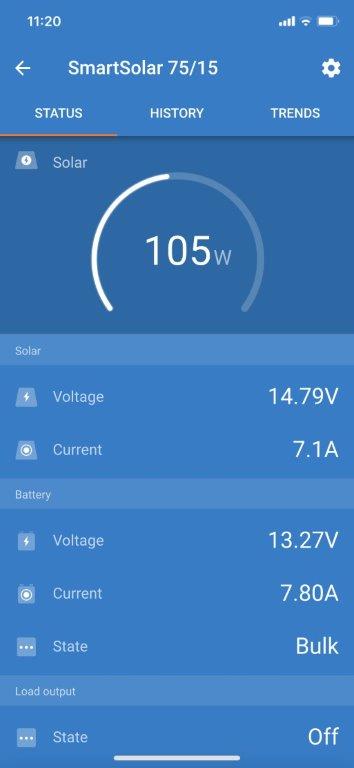 Then in series - which gave about 10% gain in battery current.
Then in series - which gave about 10% gain in battery current.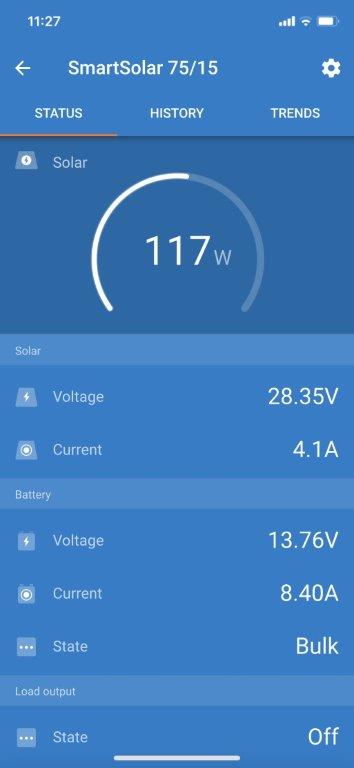 I tried this test again an hour later. The 130W by itself:
I tried this test again an hour later. The 130W by itself: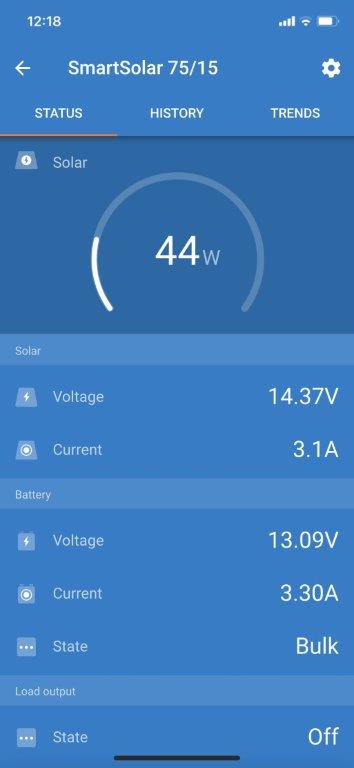 In parallel
In parallel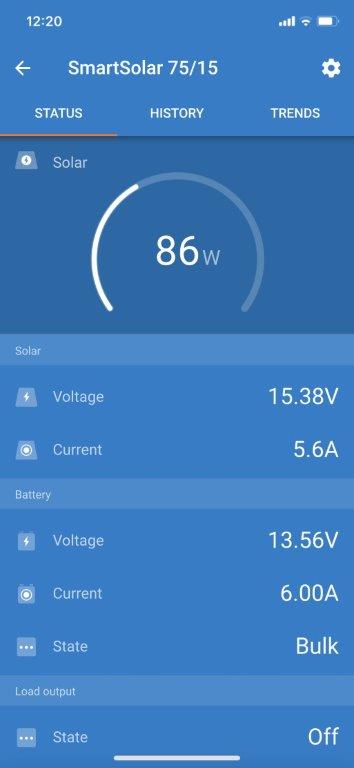 Then in Series which gave an approximate 30% increase in charging current over parallel this time?
Then in Series which gave an approximate 30% increase in charging current over parallel this time?